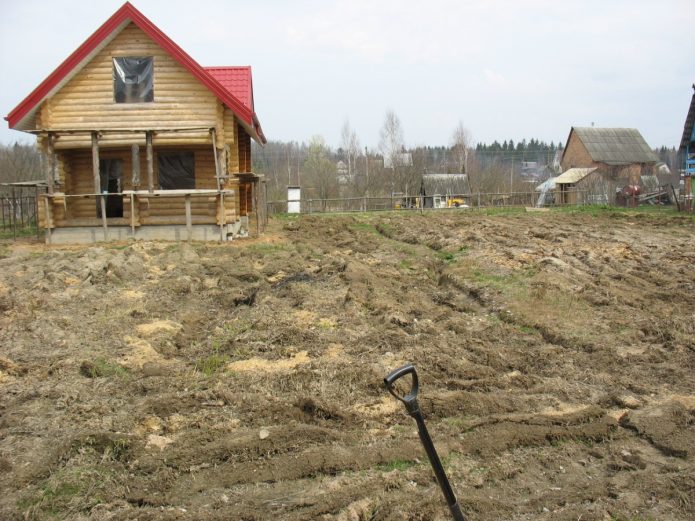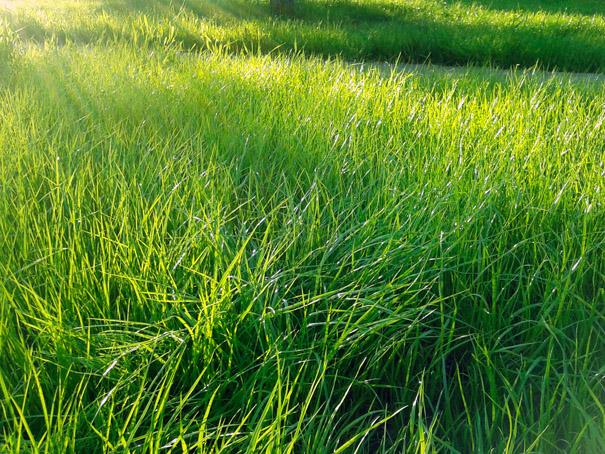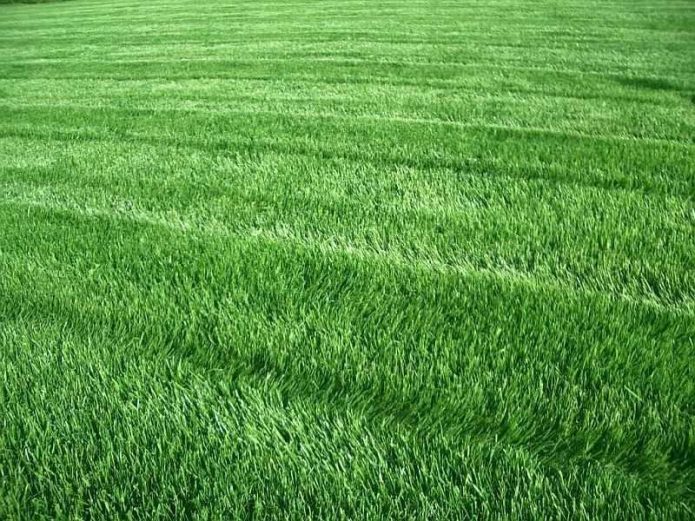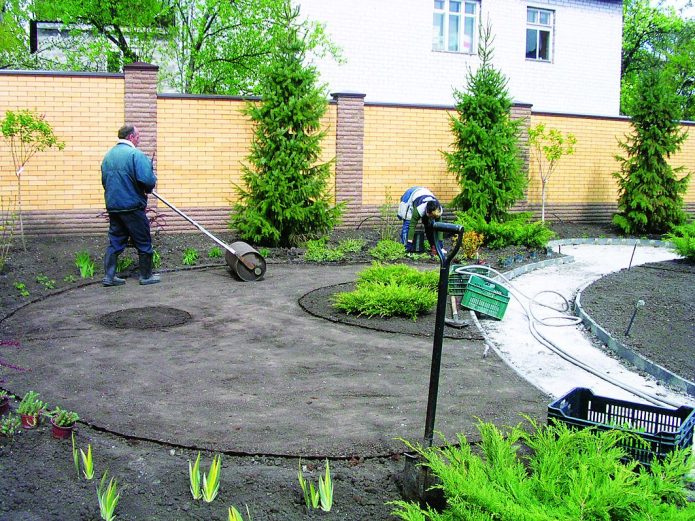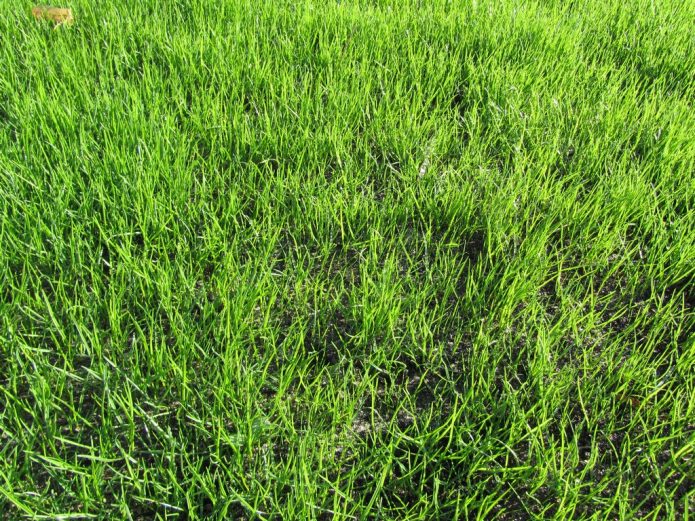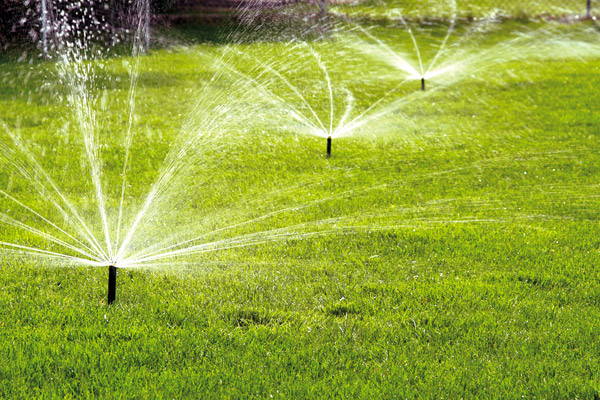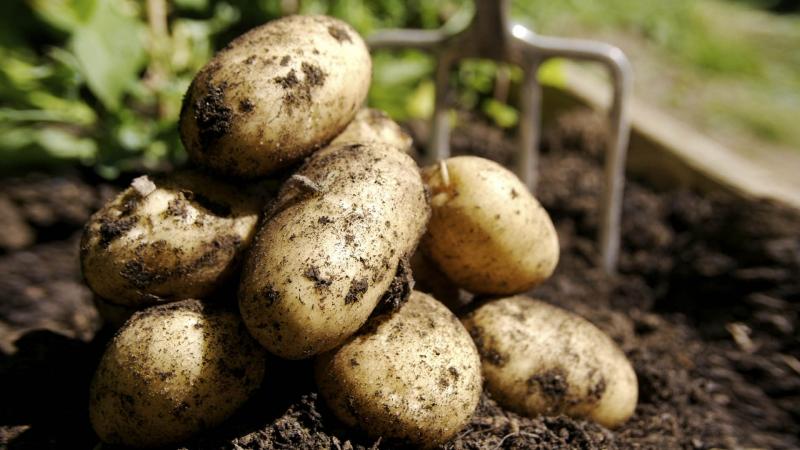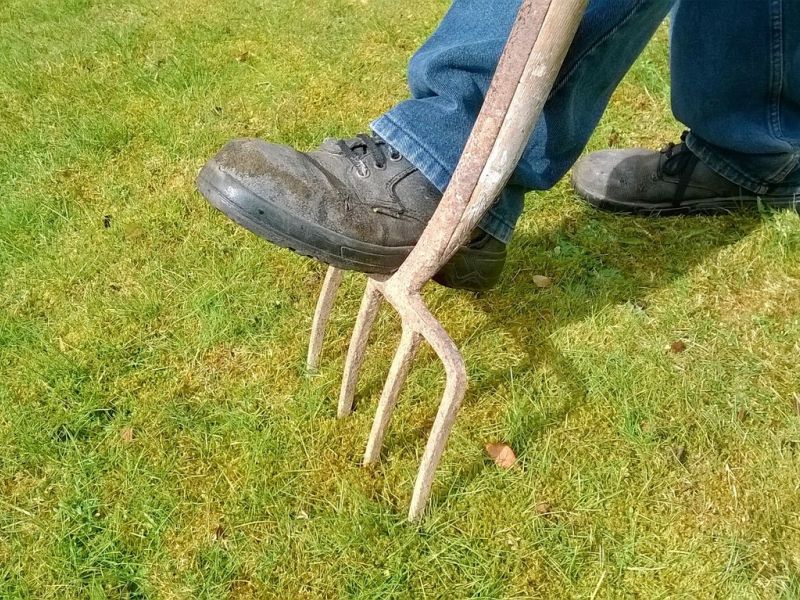A neat green lawn near the country house is the dream of every owner who strives to have order in everything. Newbies to the lawn business do not always think about how to plant the lawn correctly, because both dill and parsley grow well on their beds. What problems can be with the grass, if it grows anywhere, and even without human intervention? In fact, creating a green lawn is a completely different story. One cannot do without special technologies and even without additional tools.
Content
Where can you plant lawn grass, and where you can't
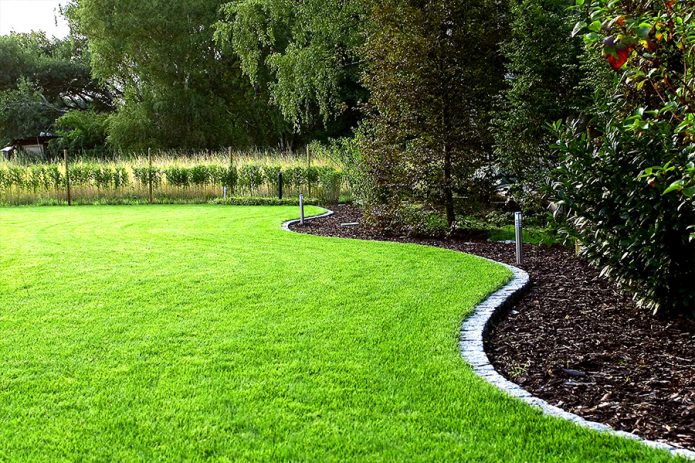
Planting a lawn is simple, but without regular maintenance, it will quickly cease to be pleasing to the eye.
A lawn can be created on almost any site. Smooth horizontal surfaces and slopes, sunny and shaded areas, with sandy or clayey soils are suitable. The problems that arise are usually solved with the help of the selection of herbs - you can always find those that are undemanding, for example, to soil fertility or illumination.
If the summer resident has the opportunity to choose exactly where to break the lawn, then sunny areas are preferable - their herbs are covered with a dense carpet, and sometimes bald spots form in the shade.
If the site is swampy or the groundwater rises very close to the surface, this is a reason not to arrange a lawn here. At least until the necessary drainage works are carried out.
To protect yourself from possible problems, you need to think over (or better, draw) the lawn scheme in advance. On the site planned for landscaping, there may be trees, flower beds, some kind of structures. Will they interfere with mowing the lawn and how can you avoid problems? All this must be considered. If, for example, a lawn mower is supposed to be used, then between the area sown with grass and the wall of the house (fence, curb) there should be a free space 1 m wide.
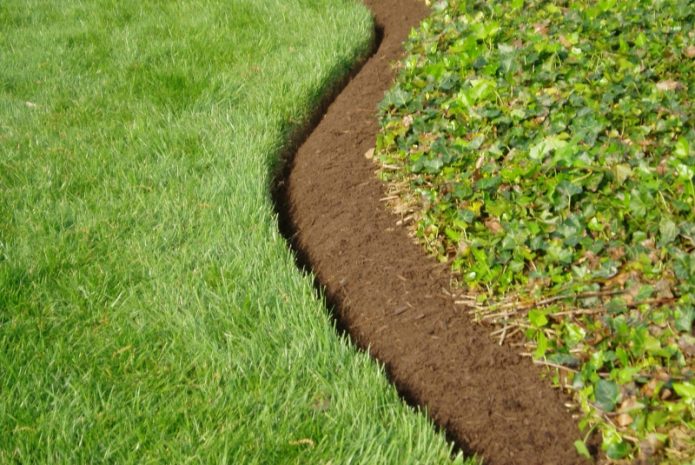
Curb tape will help limit the growth area of the lawn so that it does not "strangle" other plantings
You cannot create a lawn in close proximity to alpine slides, rose gardens and flower beds, since lawn grasses (most of which are cereals) easily develop new territories and can ruin valuable plantings. Experts call this phenomenon "lawn spreading" and recommend isolating the "conqueror" from neighbors with curb tapes made of plastic or galvanized iron, dug into the ground.
As for trees or large shrubs, the problem here is that the lawn approaching directly to the trunk usually causes it to sink into the soil - the root collar of the tree begins to undermine, and the plant dies. For this reason, experts do not recommend breaking the lawn directly under a tree or shrub. If the planting of trees and the arrangement of the lawn are carried out at the same time, such an option is possible - to form a small hill with a flat top and plant a tree on it. Then the lawn and the tree will be good neighbors.
Conditions without which the lawn will not grow
Important conditions for the formation of a quality lawn are:
- pre-clearing the area from garbage and removing it (neither plastic bottles nor branches can be buried on the future lawn);
- uprooting stumps;
- digging up the soil with the addition of fertilizers;
- weed control;
- leveling the site and compacting it with a roller;
- sowing in 1 day on the entire site (for even seedlings);
- further - regular watering, weeding, mowing.
What seeds to choose for a beginner
The grasses used to create a lawn must meet a number of requirements:
- be perennials;
- be adapted to the local climate;
- have a strong root system;
- reproduce not only by seeds, but also vegetatively;
- to give friendly shoots already at the very beginning of its growth;
- respond well to a haircut.
A person who has not previously dealt with lawns is usually interested in what is preferable: to grow a mixture of herbs or just one? According to experts, a mixture is preferable for beginners - the lawn coverage is more stable and requires less attention. Monoplants are more often used for elite areas, they are higher in decorativeness, but more capricious in care.
Herbs are well adapted to the Russian climate:
- Bluegrass. It can grow on poor soils, sprouts earlier than other crops, looks decorative, is able to displace weeds. More often it is used not as a monoculture (since the roots take root slowly), but as the basis of a grass mixture.
- Polevitsa. Resistant to cold, looks beautiful on the lawn thanks to the dark, dense greenery. Can resist weeds, grows without bald spots. Painlessly tolerates frequent haircuts.
- Ryegrass. It is used as a monoculture only in regions with relatively warm winters, since it does not have high frost resistance. In other areas, it can be used as part of mixtures or as an annual monoculture. It has beautiful leaves of medium width. The seedlings are so friendly that sometimes the owners prefer not to mow such lawns.
- Red fescue. Undemanding in maintenance, can be used as an independent lawn grass and in mixtures. Seedlings appear quickly and amicably, tolerates haircuts well. Practically not affected by fungal diseases, successfully resists drought.
- Direct fire (meadow). An amazing grain - it grows better on poor soils than on fertile ones. Other plants use this: if the land is well fertilized, they quickly displace the fire from its territory.
Some lawn crops can be called "special purpose" plants because they help the gardener solve various problems:
- oak bluegrass grows better than other crops in partial shade;
- marsh bluegrass tolerates waterlogged soil well;
- The bent bent is very decorative, it has a rare, emerald color;
- The red bent has creeping shoots and is lighter in color than other lawn grasses, and is interesting in mixes.
A variety of lawn mixtures can confuse a beginner, so before buying seeds, you need to be interested in what a particular mixture is intended for. To make it easier to navigate, they are all divided into groups:
- Mixes are universal. Formed from hardy, fast germination of herbs. Able to resist weeds. Need frequent haircuts.
- Sports mixtures. Suitable for playgrounds, recreation areas.
- Meadow-type mixtures. They consist of grains and flowers, giving the impression of forbs. Not suitable for strict, often mowed lawns.
- Elite mixes.Difficult to clean, but highly decorative.
- Mixtures designed for a specific climate and special conditions (eg shade).
An example of how herbs can be combined in one mixture: fescue - 60%, bluegrass - 30%, bent grass - 10%.
How to plant a lawn on the site: step by step instructions
Direct sowing of seeds is preceded by a large preliminary preparation. It is as follows:
- Sod is removed from the area allocated for the lawn (using a shovel or a special machine).
- The soil is treated with herbicides to destroy the roots of weeds (manual treatment does not allow achieving the desired result).
- The surface is carefully leveled, regardless of whether it is horizontal or sloped. Land from elevated areas is transferred to pits, low-lying places. At the same time, the composition of the soil is adjusted - if it is very scanty, purchased peat soil is added; if it is heavy clay, sand is poured so that it passes water and air to the roots of plants. If necessary, drainage is made from two layers - broken brick and sand, and a fertile layer of soil is placed on top.
- For 1–1.5 months, the land is kept under fallow, regularly removing weeds. Sometimes this stage is skipped, sometimes the site is sown with herbs useful for the soil (lupine, vetch, white mustard) and together with the plants (at the end of the fallowing period) they dig up the soil.
- A week before sowing lawn grasses, mineral fertilizing is scattered over the site (for 1 sq. M - 40-60 g each) and using a rake it is deepened into the soil by about 5 cm.
- Lumps of earth should not remain on the soil surface - they are also fought with using a rake or (if the site is large) a motor-cultivator.
After the soil is prepared, you can plant a lawn in the country with your own hands. For each square meter, they will need from 35 to 50 g of seeds. In order to sow all parts of the site evenly, they measure out the required portion, select the appropriate capacity to scoop up exactly the amount of seeds that is needed each time. A frame in the form of a square with sides equal to 1 m is made from thin slats.
And here are the next steps:
- The template frame is placed on the ground and seeds are poured onto the ground within its boundaries. Half - from top to bottom, the other half - from left to right (so they are evenly distributed).
- On top of the seeds, without removing the frame, pour a little peat and roll it with a mini-roller or just a cut of a round pipe.
- In this way, step by step, the entire lawn is sown.
- After that, the area is watered from a hose with a spray.
Seedlings usually appear on the 4th day after sowing, and after 4-6 weeks the lawn looks fully formed.
If the result is unsatisfactory, the lawn maker analyzes whether everything was done correctly. A common mistake among beginners is mixing seeds and sand in a 1: 1 ratio before sowing (this is convenient because the seeds are small). Yes, experienced gardeners do this, but beginners often miss - they scoop up more sand than seeds, and as a result, they get bald spots on the lawn.
Another important question: what time of year is best for lawns? It is better for a novice gardener to do this in the spring:
- during the planting season, they will have time to take root well and in the future - successfully overwinter;
- if errors are found in the work, the owner of the lawn has enough time to correct them - summer, early autumn;
- spring soil is rich in moisture, it will help the growth of herbs.
Tips from professionals: seeds should be sprinkled on the edges of the lawn thicker than in its central part, approximately twice, and work should be carried out in calm weather so that the seeds do not scatter where they do not need to.
A few expert tips on video
What is the minimum care you need to provide after sowing with your own hands
Sowed - and forgot? This tactic is definitely not about the lawn. It requires serious care from a gardener or summer resident, especially in the first year. It is important how the grass overwinters, how reliably it takes root in order to delight with its beauty for many years.
One of the main components of care is watering. Moisture in the soil is especially needed during the germination of seeds, in dry soil they will die without hatching. However, waterlogging should not be allowed, so as not to provoke the formation of moss, mold, and rot. The optimal number of waterings is every 3-4 days. Desirable - by spraying (or sprinkling).
Experts do not recommend rushing to weeding - it should be carried out only when the lawn gets stronger and it will be possible to step on it. On average, this moment occurs after 1 month. And even after that, weed control must be done carefully - by spreading a sheet of plywood and standing on it, and not directly on the grass. Some gardeners do this: they make something like short skis from pieces of plywood and tie them to shoes - in this case, the pressure on the lawn is distributed more evenly.
The next important area is mowing. Thanks to him, by the way, there are fewer problems with weeds, since unwanted crops are "trimmed", not giving them the opportunity to form seeds and continue the attack on the lawn. The first mowing can be done when the grass reaches a height of 12–15 cm, about 5 cm should be cut. The tool must be well prepared for this work: if the blades of the mower are dull, it will begin to uproot the plants. Regularity of mowing is once every 7-10 days in summer, less often in autumn.
Competent preparation of the lawn for winter is of great importance - it must be trimmed, cleaned of leaves flying off the trees.
What can damage the lawn? Oddly enough, dogs. The traces of their vital activity not removed from the grass cover “burn out” the plants, and bald spots may appear on the green carpet.
A lawn sown with perennial grasses, with proper care, quickly becomes decorative. It will last for years if it is maintained with regular watering and fertilizing, cut in time and carefully prepared for winter.
